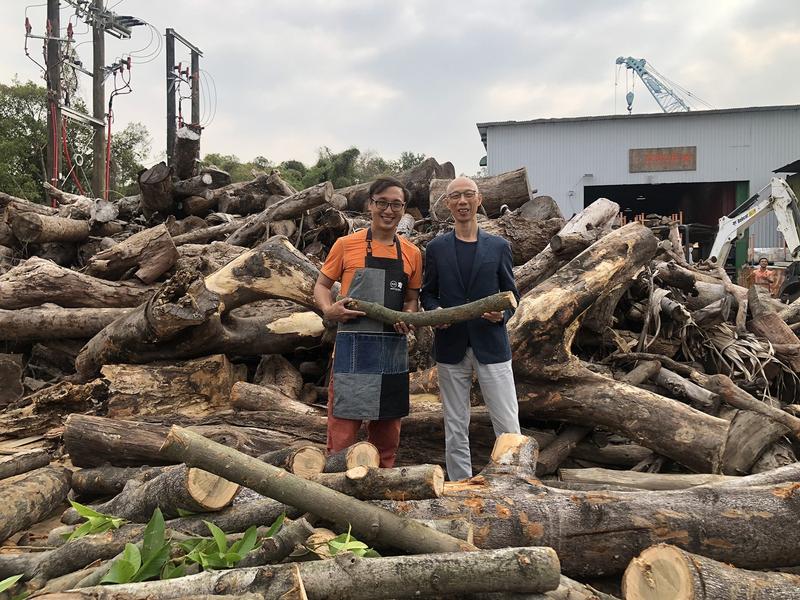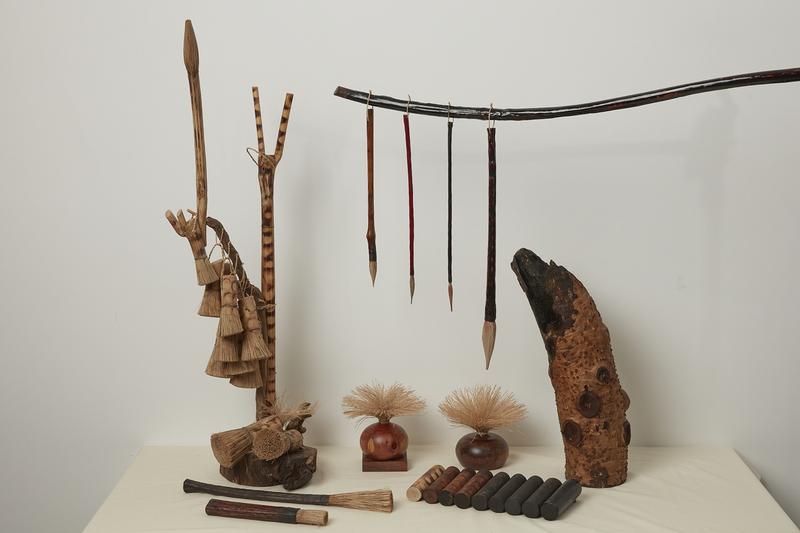The fine art of chiseling timber
The fine art of chiseling timber
HK EDITION
On SoHo's Peel Street, a restored heritage building houses Crafts on Peel: a nonprofit venue and foundation. Here Hong Kong craftsmanship is celebrated through collaborations between traditional and modern designers and artists. Its current exhibition, Stories Encapsulated: Wood, pays homage to the local tradition of woodworking that once enjoyed a thriving international market.
The three-story space is showcasing a variety of wooden objects, some of them collaborative projects, made by local and overseas craftsmen. The works range from small decorative to furniture pieces, each with its own unique story. Master Siu Ping-keung and Ken Chow were inspired by the Nordic-style tambour cabinet to create Chamber of Time - its doors open to reveal intricate carved scenes depicting life in the Ming and Qing dynasties. A young trio - Yip Chun-hang, Jesse Hao and Roy Ng - carved Wood Tectonics, a pair of flower-shaped pieces, from pomelo and guava branches with a wood lathe. The Passage, a series of lacquered screw-pine utensils, are the handiwork of Master Wong Kin-hung and Jacky Lam.
Joining past and future
Hong Kong has two styles of woodworking: modern and traditional. The modern form involves hammer and nails, while the traditional style sees joints carved and fitted together to form a rigid, self-supporting structure.
Processing wood was also an integral part of Hong Kong's woodworking industry. Both imported and locally sourced timber would be sawed, sanded, dried and supplied to clients. "When the wood-processing industry was flourishing in Hong Kong, many sawmills were situated near the dockyards to produce lumber for shipbuilding and repairing," says Penelope Luk, creative director at Crafts on Peel and co-curator of Stories Encapsulated.

Hong Kong was famous for manufacturing furniture between the 1950s and '80s, but demand declined thereafter as factories moved their operations to the Chinese mainland. New technologies came in, and the convenient binding power of glue and screws pushed out traditional methods. "As the economic paradigm shifted, many sawmills repositioned themselves to focus on waste recycling and wood renovation in Hong Kong," Luk explains.
By the end of the '80s, woodworking was a dying industry. However, a revival began after September 2018's Typhoon Mangkhut uprooted tens of thousands of trees. These would have ended up in a landfill were it not for the HK TimberBank, created with the mission to recycle dead trees by turning them into furniture, with support from local artisans.

In addition, the past decade has seen more professional and amateur wood craftsmen participating in classes, and sculpting toys, furniture and tableware. "Although we may just be at the beginning of the revival of the woodwork industry in Hong Kong, I believe that the industry will have a resurgence under a new model in the following 20 or 30 years," says Chow, also a co-curator of Stories Encapsulated.
The family-run Chi Kee Sawmill & Timber in Sheung Shui is possibly the largest of Hong Kong's surviving traditional sawmills. Wong Hung-kuen took over the 10,000-square-foot space from his father, who founded the company in 1946. "There are over 100 years of history in the Hong Kong woodworking industry, and although it's changed, it will always exist," says Wong. Interestingly, the sawmill has a cult social media following, its digital channels managed by Wong's daughter. Before the pandemic put a pause on such activities, the company regularly hosted workshops that filled up quickly - a positive sign of the public's renewed interest in the woodworking tradition.

Sustainability matters
Wong notes that consumer attitude is shifting. Young people are more keen on sustainability. Carpenter Cynthia Wu, an alumna of the Hong Kong Institute of Construction (HKIC), says consumers prefer pine and oak furniture because these woods are sustainable compared with rosewood and teak, as they grow faster. Last November, the Construction Industry Council's Zero Carbon Park in Kowloon Bay collaborated with the HKIC and Recycle Green to provide a Sustainable Construction Playground built from upcycled scrap timber. Meanwhile, Nan Fung Group's "In Time of" program last autumn hosted Playing Woodstock: Hong Kong Woodwork, an exhibition showcasing local woodcraft groups' works made from recycled logs. The event aimed to promote wood recycling and enhance the public's awareness of wood as a precious resource.
There is a growing appreciation for artisanal skills, as well as pride in local heritage, particularly as it relates to industries under threat. As Luk notes: "Each craftsman puts in their sweat and tears, overcoming challenges and continuously enhancing their skills to produce the wooden objects we see before us."
Chow notes that the most effective way to preserve the woodworking tradition is to create and maintain demand. He adds that this is not always possible, however, bearing in mind the need for artisans to make a profit, and the painstaking hours of labor involved, particularly for custom pieces. As for Luk, she highlights the contribution of every member of the community, including apprentices, artisans, designers, creatives, aficionados, collectors and end users: "The key for traditional crafts to enter modern life is to have a group of passionate and dedicated inheritors and contributors within the ecosystem."